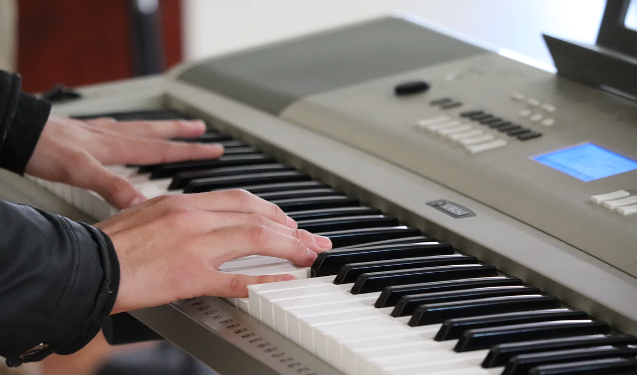What You Need To Know About Self-playing Pianos
aaamusic | On 15, Apr 2021
Self-playing pianos, also known as player pianos, employ a pneumatic/ electro-mechanical mechanism for playing pre-programmed music. Watching it while it works is quite a spectacle, as the piano looks as if it is playing by itself; the keys move up and down automatically and produce the most precise playing of songs and pieces we already know. In recent years, the device has made a comeback due to advantages, such as the ability to control its sound through speakers and listening to scintillating music from the comfort of our homes.
While self-playing pianos were a feature most often found in hotel lobbies and fancy restaurants, many have become interested in purchasing gone for their own entertainment at home. So, if you are interested in how self-playing pianos work or are considering investing in one for your home, then it is worth exploring in more detail to learn more about their different types and how they work as well.

Types of Self-playing Pianos
You’ll be pleasantly surprised to find that there is a variety of options when it comes to these kinds of pianos. Even though all self-playing pianos use similar technology, there are a few differences between the major types. Ones are using Silent Drive technology that allows the piano keys to move up and down, while others use Disklavier self-playing technology that fits electrical sensors for recording electromechanical and movements of the piano keys for playback on the paper roll.
Today’s self-player pianos can also have a device installed in them that uses a computer-controlled plunger to move the piano keys. This allows you to control the piano from any electronic device such as a mobile or a tablet. With this new technology, decreasing or increasing the music volume has also become easy, as opposed to earlier times when tampering around with the volume made the notes get mixed up.
How Does a Self-playing Piano Work?
A self-player piano or a pianola works through a pneumatic system that employs a vacuum built by bellows that are driven using electric power or pedals. Mainly, it’s essentially a roll made of paper. This roll is pulled over a sturdy rod, which has a row of punch holes, So for each note, the roll has a correlating punch hole.
In the models that have come up in recent years, the makers have ensured to leave in holes for both pedal and dynamic use. It is worth noting that every punched hole connects to an ingenious system of membranes and valves.
When air is sucked through the paper’s holes, a corresponding membrane is lifted. This leads to the opening of a valve and the closing of a bellow that produces the musical note. Furthermore, the tiny bellow starts up the tone, and the hammer goes on to strike the corresponding string. The tempo is indicated by the speed with which the paper roll passes the bar containing the punch holes.
According to the professional musicians at luxury-pianos.com/self-playing-piano, it is quite possible to adjust the tempo by manipulating the various levers that are present. Moreover, by adjusting the force used to drive the bellows, the tone’s volume can be increased/ decreased allowing you to listen to your favorite music pieces at the volume you want which is suitable for home use.
Recordings by Famous Artists
The great works of artists of repute from old times can be accessed utilizing special piano player rolls. This allows you to listen to classical pieces from great composers and players while watching the piano’s keys go up and down. This option came about with the invention of the pianola roll that ensured that complete pieces could be recorded. Back in those days, there was an alternative, a recording with 78 revolutions per minute. However, the technology was very limited and only allowed for a short playing time.

We-re always looking for new ways to entertain ourselves, and a self-playing piano is a sure shot at really livening up any household. It can also allow you to learn a new skill unconventionally- simply by observation and following along. A self-playing piano, being the high-fidelity player that it is, will be a delight to consumers. Truly, it is interesting to see the technology’s trajectory from this point given how it has many applications, such as allowing artists to play duets with themselves and enabling people to listen to concerts in their living rooms. One thing is clear—with the advancement in the music industry and the interest in classical music, the device is anything but irrelevant.

